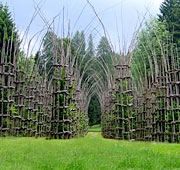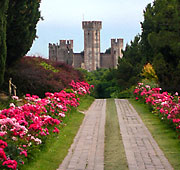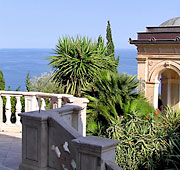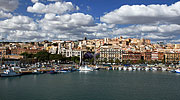Sardinian sand castles
On Sardinia's Costa Verde, a windswept expedition to the Dunes of Piscinas.
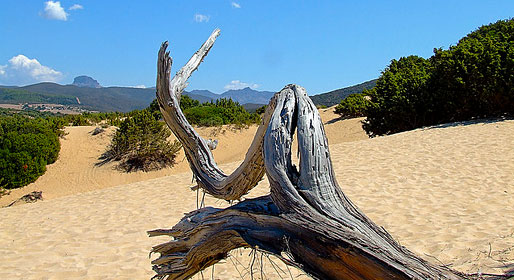
A miniature Sahara sculpted by the mistral wind, the Dunes of Piscinas are one of Sardinia's most beautiful natural wonders. The dunes are the highest in the whole of Europe, the summit of the tallest reaching an incredible 100meters above sea level. They are also some of the most extensive: stretching almost 2kms inland from the water's edge. Throughout the year the strong northwesterly winds continue to model the landscape: gathering the sand along the coast, and pushing it inland where it accumulates in immense mounds of soft glittering gold. The constant turbine of the wind and the ever shifting ground means that only the most resilient of vegetation grows here, and in fact the reeds, mastic trees, and juniper not only survive, but seem to thrive in this decidedly hostile environment. In springtime the dunes provide the stage for the spectacular flowering of the gillyflowers and sand poppies.
Sardinia's Costa Verde, also known as Marina di Arbus, extends for 47kms along the southwestern shores of Sardinia, in a dramatically beautiful alternation of incredibly long beaches, sheer cliffs and sun-scorched desert landscapes. One of the wildest parts of the island, the Costa Verde conserves a unique ecosystem, inhabited by Sardinian deer and Caretta Caretta marine turtles, which each year, in the months of June and July, come here to deposit their eggs on the sandy shores.
The Dunes of Piscinas are not the only attraction. In the past, this area of Sardinia was the hub of the island's mining industry. Until the 1950's the mines of Montevecchio and Ingurtosu produced a staggering 10% of the world's zinc and lead. When, in the late 1960's, the industry collapsed, the mines and the towns which had grown up around them were abandoned and nature was left to reclaim the terrain, where it now flourishes amidst buildings destined to remain as industrial archaeology forever. In the town of Ingurtosu, today's visitors wander through the empty streets, past the Art Nouveau style Villa Idina where the director of the mines once lived, the edifice known as Il Castello (castle in Italian), the church, hospital, the old mining lifts and the remains of the "Laveria Brassey", the mechanical washery named after the British Lord Brassey who purchased the mines in 1899. The washery was built in the vicinity of the railway line which served to transport the zinc and lead to the port of Piscinas, from where it was transported by sea as far as Carloforte.
Ingurtosu is part of the Geomineral Historic and Environmental Park of Sardinia and in 1997 the whole territory was awarded UNESCO World Heritage Site status.
Nature
Main destinations
Hotels in the area
- Useful links
- Sardinia
- Cagliari Hotels
- Sardinia (all hotels)

